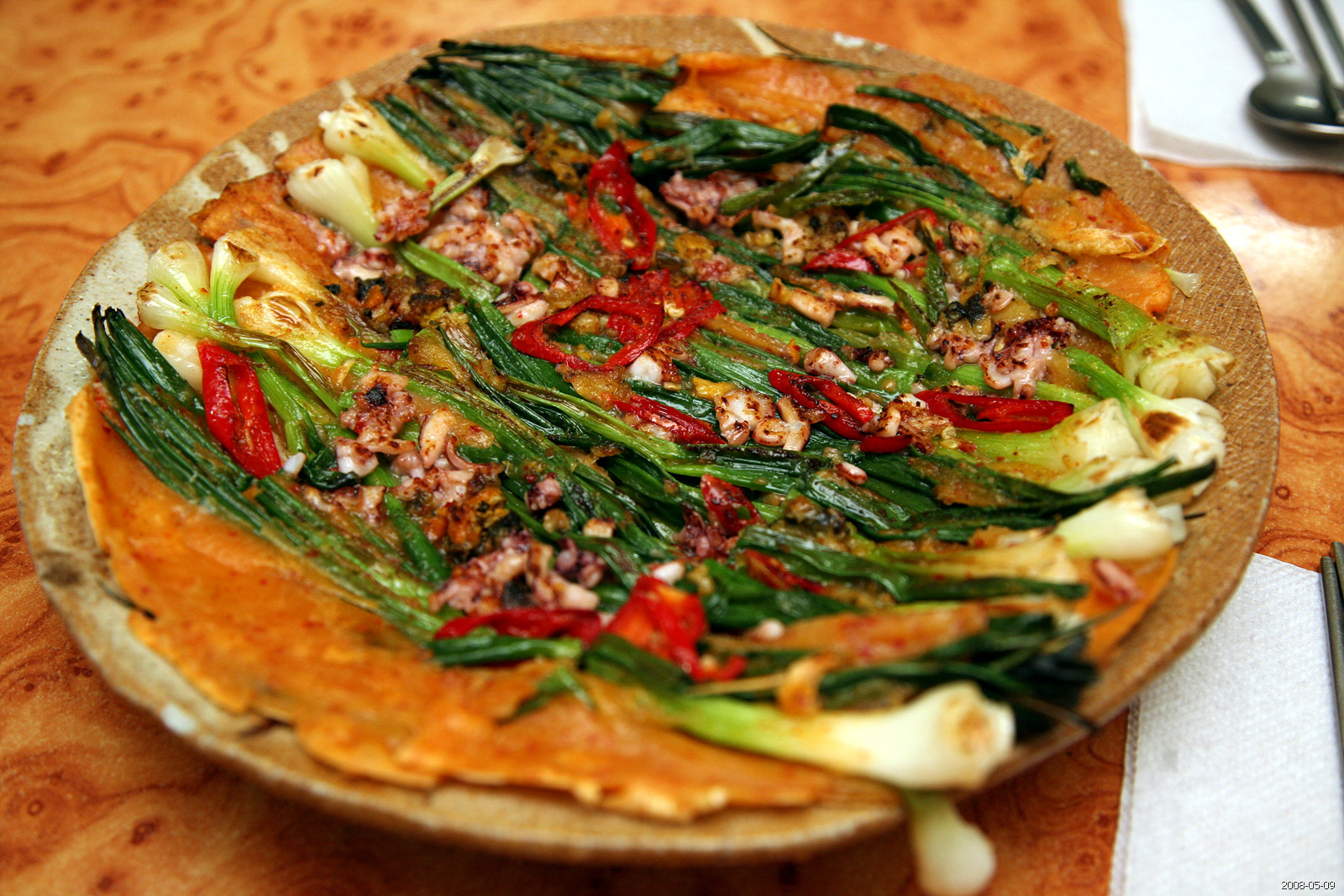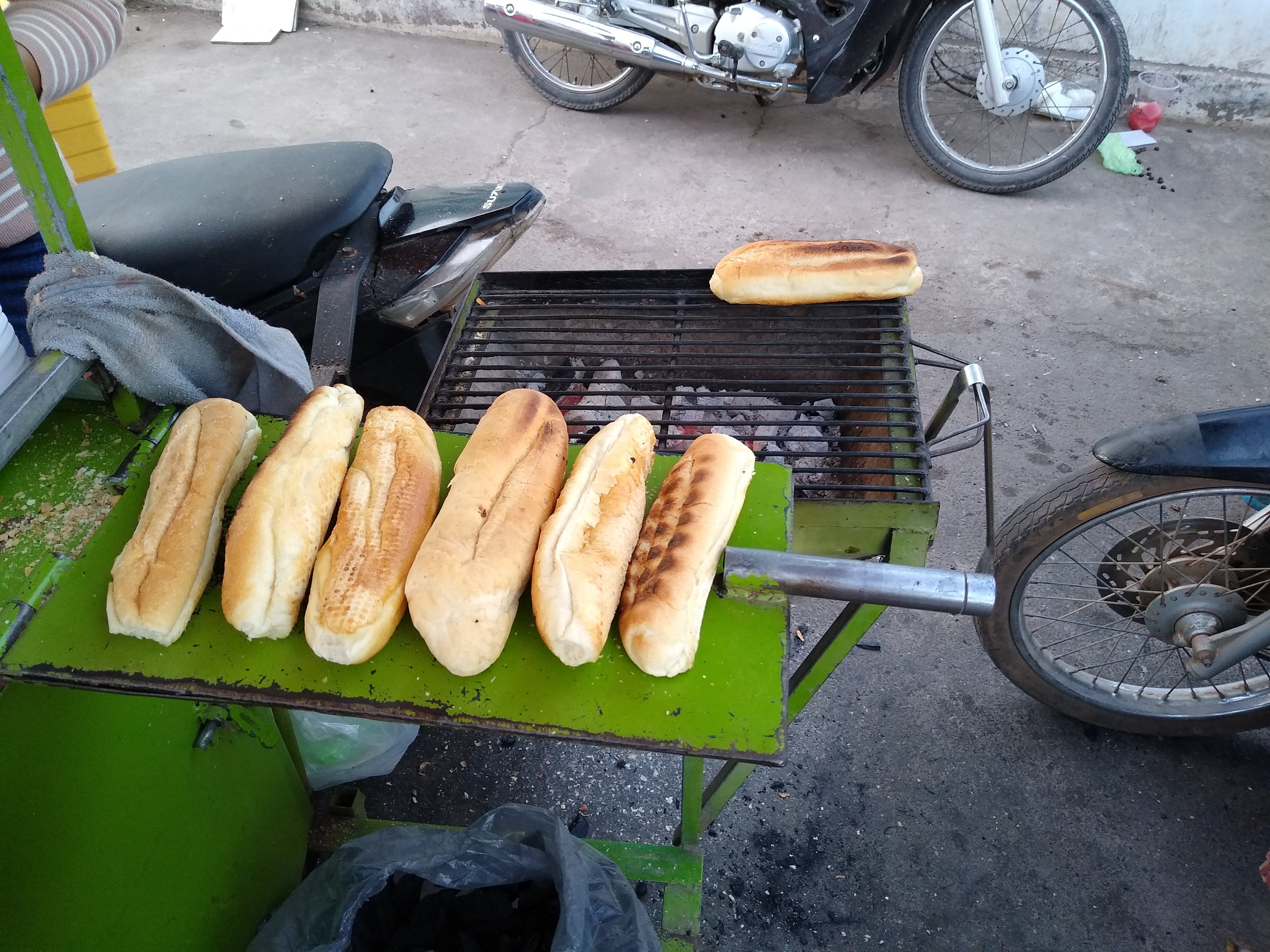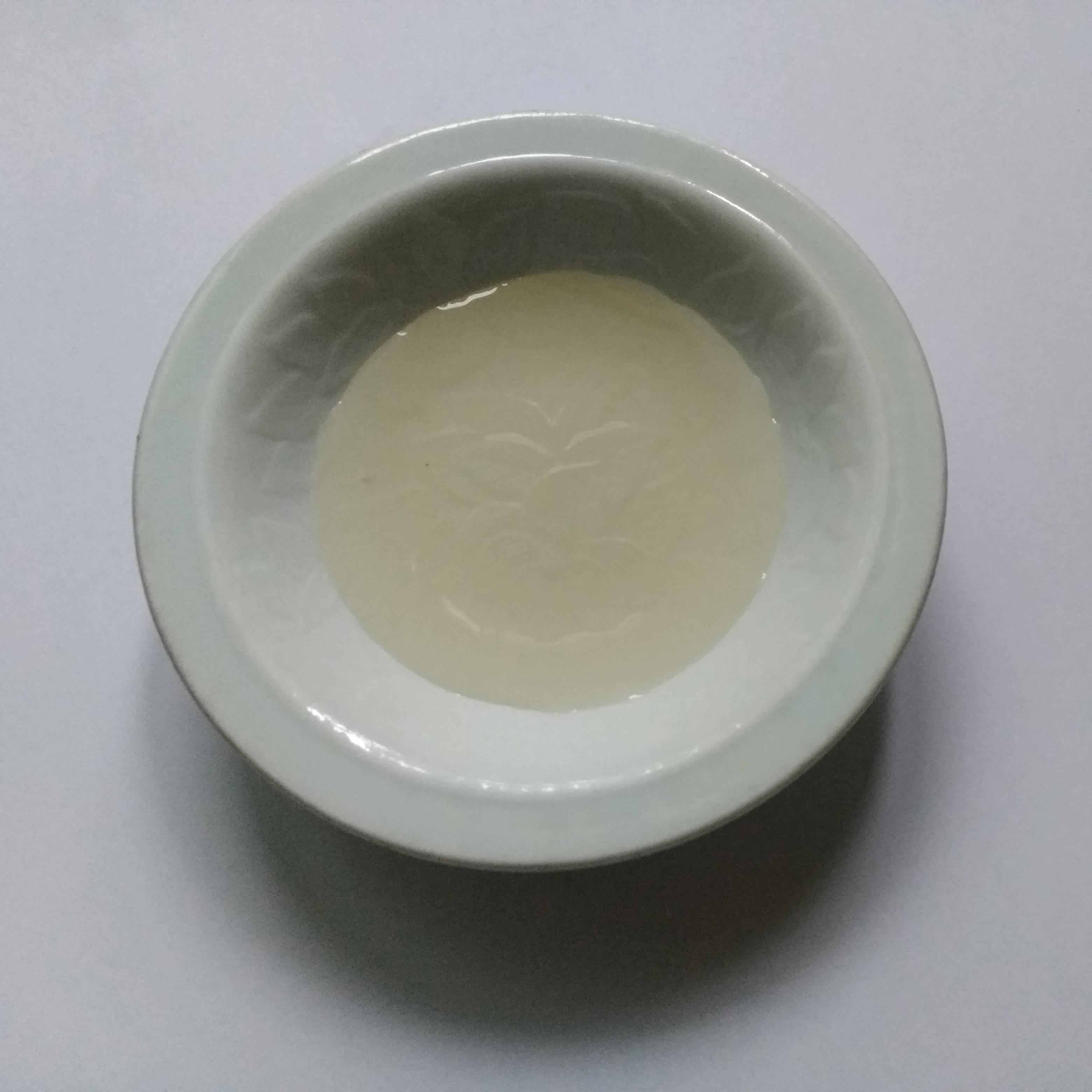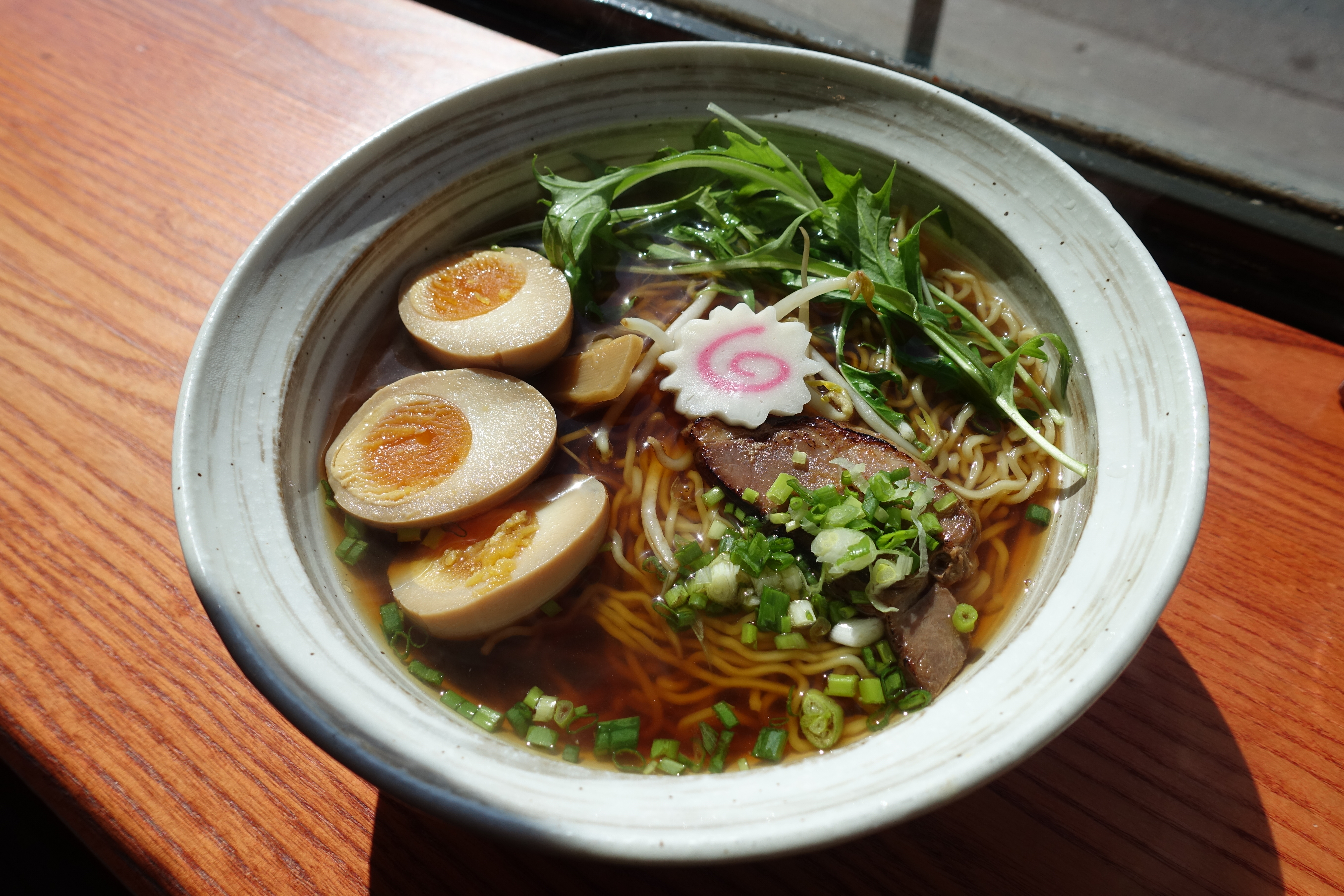|
Congyoubing
Cong you bing (; zh, s=, t= 蔥油餅, p=cōngyóubǐng, l=scallion oil pancake), also known as scallion pancake or green onion pancake, is a Chinese savory ''bing'' (flatbread) made with wheat dough and minced scallions (green onions). The unleavened dough is folded repeatedly into layers, with oil and green onions added between each layer. Then it is pan-fried, which gives it crisp edges and a chewy texture. Many layers make up the interior, contributing to its chewy texture. Variations exist on the basic method of preparation that incorporate other flavors and fillings. Scallion pancakes are served both as a street food item and as a restaurant dish. They are also sold commercially, either fresh or frozen in plastic packages (often in Asian supermarkets). Variations and ingredients Other ingredients, such as chopped fennel greens and sesame seeds, are sometimes added with the green onions. When using garlic chives (''jiucai''), these pancakes are called ''jiucai bin ... [...More Info...] [...Related Items...] OR: [Wikipedia] [Google] [Baidu] |
Taichung
Taichung (, Wade–Giles: '), officially Taichung City, is a special municipality (Taiwan), special municipality in central Taiwan. Taichung is Taiwan's second-largest city, with more than 2.85 million residents, making it the largest city in Central Taiwan. It serves as the core of the Taichung–Changhua metropolitan area, Taiwan's second-largest metropolitan area. Located in the Taichung Basin, the city was initially developed from several scattered hamlets helmed by the Taiwanese indigenous peoples. It was constructed to be the new capital of Taiwan Province and renamed "Taiwanfu (other), Taiwan-fu" in the late Taiwan under Qing rule, Qing dynastic era between 1887 and 1894. During the Taiwan under Japanese rule, Japanese era from 1895, the urban planning of present-day Taichung was performed and developed by the Japanese. The urban area of Taichung was organized as a Provincial city (Taiwan), provincial city from the start of ROC rule in 1945 until 25 December 2010, ... [...More Info...] [...Related Items...] OR: [Wikipedia] [Google] [Baidu] |
Parotta
Parotta or porotta (Malayalam: പൊറോട്ട, Tamil: பரோட்டா) is a layered Indian flatbread made from refined flour, eggs and oil. It is commonly seen in South India, especially in the states of Kerala and Tamil Nadu, as well as in Jaffna in Sri Lanka (as Ceylon Parotta). Variants of the bread spread by Indian Muslim traders and by indentured labourers from the British Raj are popular in South Asian, South East Asian and Caribbean countries like Malaysia, Indonesia, Singapore, Thailand, Brunei, Mauritius, Maldives, Guyana and Trinidad and Tobago under the names roti canai, roti prata, roti thitchu, farata, oil roti or buss up shut. Porottas are often available as street food and in restaurants, and are also served at weddings, religious festivals and feasts. In the South Indian state of Kerala it is commonly served in roadside foodstalls called ''thattukadas'' and in local toddy shops called ''kallushaaps''. It is prepared by kneading maida, eggs, oi ... [...More Info...] [...Related Items...] OR: [Wikipedia] [Google] [Baidu] |
Pajeon
''Pajeon'' () is a variety of '' jeon'' with scallion as its prominent ingredient, as ''pa'' () means scallion. It is a Korean dish made from a batter of eggs, wheat flour, rice flour, scallions, and often other ingredients depending on the variety. Beef, pork, kimchi, shellfish, and other seafood are mostly used.Pajeon at If one of these ingredients, such as , dominates the jeon, the name will reflect that; e.g. ''ojingeo jeon'' () is 'squid jeon'. ''Pajeon'' is usually recognizable by the highly visible |
Cambodian Cuisine
Cambodian cuisine is the national cuisine of Cambodia. It reflects the varied culinary traditions of different ethnic groups in Cambodia, central of which is Khmer cuisine (, ), the nearly-two-thousand-year-old culinary tradition of the Khmer people. Over centuries, Cambodian cuisine has incorporated elements of Indian cuisine, Indian, Chinese cuisine, Chinese (in particular Teochew cuisine, Teochew), French cuisine, French, and Portuguese cuisine, Portuguese cuisines. Due to some of these shared influences and mutual interaction, Cambodian cuisine has many similarities with the cuisines of Central Thai cuisine, Central Thailand, and Vietnamese cuisine#Regional cuisines, Southern Vietnam and to a lesser extent also Central Vietnam, Isan cuisine, Northeastern Thailand and cuisine of Laos, Laos. Cambodian cuisine can be categorized into three main types: rural, elite and Khmer royal cuisine, royal cuisine. Although there is some distinction between royal and popular cuisine, it is ... [...More Info...] [...Related Items...] OR: [Wikipedia] [Google] [Baidu] |
Okonomiyaki
is a Japanese ''teppanyaki'' savory pancake dish consisting of wheat flour batter and other ingredients (mixed, or as toppings) cooked on a '' teppan'' (flat griddle). Common additions include cabbage, meat, and seafood, and toppings include ''okonomiyaki'' sauce (made with Worcestershire sauce), '' aonori'' (dried seaweed flakes), ''katsuobushi'' (bonito flakes), Japanese mayonnaise, and pickled ginger. ''Okonomiyaki'' is mainly associated with two distinct variants from Hiroshima or the Kansai region of Japan, but is widely available throughout the country, with toppings and batters varying by area. The name is derived from the word , meaning "how you like" or "what you like", and , meaning "grilled". It is an example of ( in the Kansai dialect), or flour-based Japanese cuisine. It is also called by an abbreviated name, "okonomi", where the is a politeness prefix and means 'favorite'. A liquid-based ''okonomiyaki'', popular in Tokyo, is called '' monjayaki'' (also wri ... [...More Info...] [...Related Items...] OR: [Wikipedia] [Google] [Baidu] |
Bánh Xèo
''Bánh xèo'' (, ) is a crispy, stuffed rice pancake popular in Vietnam. The name refers to the sound (from ''xèo'' – 'sizzling') a thin layer of rice batter makes when it is poured into the hot skillet. It is a savoury fried pancake made of rice flour, water, and turmeric powder. It can also be called a Vietnamese crêpe. Some common stuffings include pork, prawns, diced green onion, mung bean, and bean sprouts. Bánh xèo is often served with side dishes. Usually, some commonly added ingredients include leafy greens like lettuces or perilla leaves, other herbs as flavor enhancers like mint leaves and Thai basil, cucumbers, and pickled vegetables, usually carrots and radishes. Its dipping sauce is nước chấm (sweet and sour garlic fish sauce). History Bánh Xèo is a traditional street food in Vietnam. The working class mainly ate it because it was cheap and easy. Its origins are unknown. However, Vietnamese people agreed that the creation of this dish could be somewhe ... [...More Info...] [...Related Items...] OR: [Wikipedia] [Google] [Baidu] |
Shaobing
Shaobing ( zh, p=shāobǐng, w=shao-ping), also called huoshao, is a type of baked, unleavened, layered flatbread in northern Chinese cuisine. Shaobing can be made with or without stuffing, and with or without sesame on top. Shaobing contains a variety of stuffings that can be grouped into two main flavors: savory or sweet. Some common stuffings include red bean paste, black sesame soup, black sesame paste, stir-fried mung beans with egg and tofu, braised beef, smoked meat, or beef or pork with spices. Shaobing is not very well known in Northern and southern China, southern China, unlike other northern dishes like mantou, baozi, and youtiao. Most Shaobing are popular in Northern and southern China, the northern part of China. Different types of shaobing are often associated with certain cities and towns. Shaobing is a common breakfast item. Filled shaobing are usually eaten with soy milk and tea, while unfilled ones are usually eaten with Chinese steamed eggs, steamed eggs or a ... [...More Info...] [...Related Items...] OR: [Wikipedia] [Google] [Baidu] |
Laobing
Laobing (also: Luobing; ) is a type of unleavened flatbread popular in parts of northern China, including Beijing. It is sometimes referred to as a Chinese pancake. Laobing can be the size of a large pizza, about one centimeter thick, and is doughy and chewy in texture. The bing is made by pan frying a rolled and layered unleavened dough consisting of salt, flour, and water.Qarooni, J., 1996: Flat Bread Technology, Springer p. 86. Most laobing are plain, although some have scallions or brown sugar inside the pastry. Laobing is usually cut into slices and served as a staple food, or can be stir-fried with meat and vegetables to make chaobing (stir-fried Chinese pancakes). See also * Scallion pancake * Guokui *Paratha *Roti canai * Wrap (sandwich) A wrap is a culinary dish made with a soft flatbread rolled around a filling. The usual flatbreads are wheat tortillas, lavash, or pita; the filling may include cold sliced meat, poultry, or fish, shredded lettuce, diced tom ... [...More Info...] [...Related Items...] OR: [Wikipedia] [Google] [Baidu] |
Rice Vinegar
Rice vinegar is a vinegar made from rice wine in East Asia (China, Japan and Korea), as well as in Vietnam in Southeast Asia. It is used as a seasoning, dressing, and dipping in many dishes, including sushi, jiaozi, and banchans. Some of its variants are also a drink by themselves. Chinese Chinese rice vinegars are stronger than Japanese ones, and range in color from clear to various shades of red, brown and black and are therefore known as rice wine vinegars. Chinese vinegar are less acidic than their distilled Western counterparts which, for that reason, are not appropriate substitutes for rice vinegars. The majority of the Asian rice vinegars are also milder and sweeter than those typically used in the Western world, with black vinegars as a notable exception. Types White rice vinegar is a colorless to pale yellow liquid, more acidic than other Chinese vinegars, but still less acidic and milder in flavor than Western ones. Black vinegar is very popular in southern China. ... [...More Info...] [...Related Items...] OR: [Wikipedia] [Google] [Baidu] |
Zhenjiang Vinegar
Zhenjiang or Chinkiang vinegar is a rice-based black vinegar widely used in Chinese cuisine. It takes its name from the city of Zhenjiang in Jiangsu province. History Chinese legend ascribes the invention of the vinegar to Heita, a son of Dukang, one of the culture heroes credited with inventing alcoholic beverages in China's prehistory Prehistory, also called pre-literary history, is the period of human history between the first known use of stone tools by hominins million years ago and the beginning of recorded history with the invention of writing systems. The use .... Supposedly, Heita forgot a vat of wine for 21 days and, remembering it at dusk, found it pleasantly sour. Historical records for the present vinegar can be traced back 1400 years. The primary producer of Zhenjiang vinegar at present—the Jiangsu Hengshun Vinegar Industry Company—was established in 1840. Production Production of Zhenjiang vinegar begins when a vinegar ''pei'' mixture (wheat ... [...More Info...] [...Related Items...] OR: [Wikipedia] [Google] [Baidu] |
Soy Sauce
Soy sauce (sometimes called soya sauce in British English) is a liquid condiment of China, Chinese origin, traditionally made from a fermentation (food), fermented paste of soybeans, roasted cereal, grain, brine, and ''Aspergillus oryzae'' or ''Aspergillus sojae'' Mold (fungus), molds. It is recognized for its saltiness and pronounced umami taste. Soy sauce was created in its current form about 2,200 years ago during the Western Han dynasty of ancient China. Since then, it has become an important ingredient in List of Asian cuisines, East and Cuisine of Southeast Asia, Southeast Asian cooking as well as a condiment worldwide. Use and storage Soy sauce can be added directly to food, and is used as a dip or Salt#Edible salt, salt flavor in cooking. It is often eaten with rice, Japanese noodles, noodles, and sushi or sashimi, or can also be mixed with ground wasabi for dipping. Bottles of soy sauce for the salty seasoning of various foods are common on restaurant tables in many co ... [...More Info...] [...Related Items...] OR: [Wikipedia] [Google] [Baidu] |






